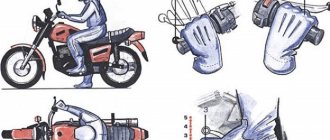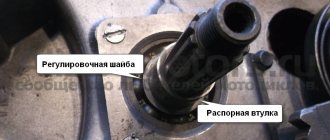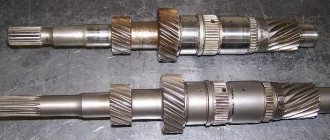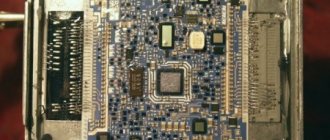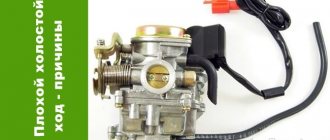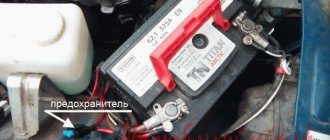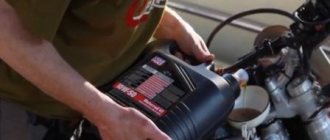How to choose clutch discs for a motorcycle?
Select a set of clutch discs strictly for your motorcycle model.
If you purchase original wheels, they are ordered strictly according to the OEM catalog number of the motorcycle manufacturer. You can also use certified discs from analog manufacturers such as EBC, Ferodo, Newfren, Vesrah, etc. In fact, these will be the same discs or discs of similar quality, but slightly cheaper. They are sold immediately in ready-made sets, this is very convenient, since you will not be mistaken with the number of disks when ordering. Clutch kits can consist of friction discs only, friction and steel discs, or include all clutch discs and springs. Most often, friction discs need to be replaced. We also recommend upgrading the spring kit if possible (it is inexpensive). Metal discs require replacement much less frequently.
The diameter and number of disks in the new set must strictly correspond to the original
(check before installation by checking with old disks). The pattern and color of ferodo on friction discs may vary among different manufacturers depending on the declared characteristics. Like brake pads, ferodo on discs can be organic or synthetic, with corresponding properties: organic is cheaper, while synthetics last longer and withstand higher loads. We recommend using only wheels from well-known manufacturers in strict accordance with the catalogue: Ferodo, EBC, Newfren. The Ferodo compound included in the kit is designed for use in a specific clutch basket.
Please do not use clutch discs from non-certified manufacturers. Poor quality discs can not only disrupt the operation of the clutch, but also begin to quickly break down in the basket, contaminating the oil and leading to damage to the oil filter, engine parts and clutch.
Compression
There are two types of engine compression testing: regular compression testing and the engine's ability to hold it. Both of these tests can tell you a lot about the health of the engine.
A simple compression test using an inexpensive tester measures the pressure created in the cylinder when the starter cranks. The obtained value is compared with the figures given in the operating instructions. If the compression is too weak, this indicates serious problems, for example, destruction of the piston rings or scratches on the cylinder bore. If the compression is very high, then you are very lucky (just kidding). Most likely, you installed oversized rings or pistons, filled in too thick oil, or your compression gauge is acting up.
Measuring an engine's ability to maintain compression requires an external compressor. This is a more expensive way to study the condition of the engine, but it provides greater opportunities for identifying faults. In principle, the diagnostic mechanism is quite simple: you create pressure in the cylinder using a compressor and monitor the pressure gauge readings. You can scroll the crankshaft, changing the position of the piston and thereby determining the places on the cylinder where compression drops - this indicates that
om that in these places there are defects in the cylinder walls. After this, you can begin to identify other weak points. Using a stethoscope, listen to the engine for air leaks from the cylinder. If air leaks into the exhaust system, this indicates incomplete closure of the exhaust valves; if air leaks into the carburetor, this indicates incomplete closure of the intake valves. Air leakage into the crankcase indicates a loose fit of the rings or defects on the cylinder bore (check the readings and air passage in different positions of the piston, as mentioned above).
How to extend clutch life?
First of all, the clutch life depends on the motorcycle driver, his experience and driving style.
The second important factor is the quality and properties of the motor oil used. Follow the manufacturer's recommendations for oil viscosity and use only specialized motorcycle oils from well-known brands such as Motul, Eni, Repsol. Change the oil regularly to fresh one and monitor its level! Average oil service life is 6000 km or 5 motorcycle hours in sports conditions. If this regulation is not followed, there is a risk of damaging the friction discs and thereby burning the clutch. To extend the life of your transmission, follow these guidelines: Avoid driving with the clutch depressed, fully depress the clutch handle each time you change gears (unless you have a quickshifter), burning rubber for fun will also reduce clutch life. Remember that athletes change their clutch twice as often as city users.
Why does the clutch slip?
Clutch wear can be indicated by noise in the crankcase, vibrations and tight squeezing of the lever. However, these factors may not indicate a breakdown or may be a feature of a particular motorcycle model. But slipping when switching is a more serious symptom. If you notice that shifting has become too difficult, it is difficult to catch neutral gear, the speed rises when you press the gas, but the motorcycle does not move - this is a sign of problems with the clutch. The most common causes of a slipping clutch can be:
- The motorcycle spent a long time in the cold, which is why the oil lost its properties, and the discs “stuck” to each other and do not move. Treatment requires thorough heating of the oil and repeated squeezing and releasing of the clutch. The use of high-viscosity oil at low temperatures can lead to incomplete disengagement of the clutch. If the problem occurs constantly, you should change the oil to a less viscous one (for example, replace 15W-50 with 10W-40);
- Low-quality engine oil was filled in: perhaps they saved money on maintenance or filled in a fake, in any case, the oil needs to be changed urgently to save the disks (please buy fresh oil from official distributors!);
- Try adjusting the clutch, maybe the cable is too tight or too loose;
- If you are sure that the problem is not in the oil, and adjustment does not help, you will have to disassemble the clutch basket: in most cases, the reason will be the development of ferodo coating on the friction discs - they must be replaced. You can find the standard thickness of clutch discs (both friction and steel) in the service manual for your motorcycle;
- The clutch may slip if there is insufficient spring pressure. Even steel springs lose their properties over time and require replacement;
- In rare cases (usually with serious mechanical impact or gross violations of operating conditions), replacement of metal discs or even complete replacement of the clutch basket is required.
Oil consumption
An increase in oil consumption is one of the most reliable methods for determining that there is “something wrong” with the engine. True, there are some nuances here too. First, you need to know the normal oil consumption of a fully functional engine. Of course, this information can be found in the motorcycle passport, but the actual oil consumption of a working motorcycle may vary. This depends not only on the engine, but also on the changes made to it, the oil used, the ambient temperature, and so on. If you know how much a healthy engine of your particular bike “eats,” then you have a starting figure against which you can measure the increase in oil consumption.
By the way, it is the oil itself that has a very large influence on consumption, so it is not surprising if, when switching to another brand of oil, consumption indicators floated in one direction or another. Let’s say that expensive synthetics or most semi-synthetics have too much fluidity and do not “hold on” well in domestic economic councils, moreover, given the fact that even practically tar can flow out of them. Therefore, it is better to adhere to the factory recommendations for the oil used and, after you have found exactly the oil that will satisfy you, try to stick to this brand. In general, I will write a detailed article specifically on oils in the near future and from it you can learn about this topic in more detail.
However, we will return to the expense. An increase in oil consumption primarily indicates the presence of malfunctions in the engine. This may be a loss of tightness, wear or destruction of piston rings, or development of the cylinder walls. In any case, if you notice a sharp increase in the engine’s appetite, I strongly recommend that you subject the engine’s condition to closer examination.
Candles
The spark plugs can be used to identify most faults associated with the engine running intermittently. First of all, you need to look at the candle itself. If there is an oily black soot on the spark plug, then this problem most often indicates either oil getting into the combustion chamber (check the rings and compression), or poor fuel quality. The latter is now becoming less and less common - gasoline kings are fighting for their reputation. Wet contacts indicate incomplete combustion of gasoline, and this can also happen if fuel is stored for a long time, when it “stratifies” and heavier components reach the combustion chamber earlier than lighter ones. If the spark plug has red dry carbon, then the mixture entering the cylinder is too lean and the carburetor needs to be adjusted. If a spark “wanders” around the spark plug or a discharge breaks through the insulator, the spark plug should be replaced - it is faulty. If the spark itself is “half-dead,” then you need to look for the reasons in the ignition and wiring.
